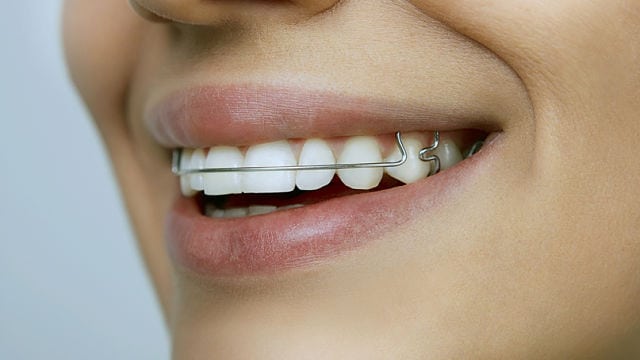Wearing braces can improve your smile drastically. The tricky part is that you have to pay close attention to gum disease because you have a higher risk of suffering from it, especially if you wear fixed appliances. Braces cover much of the tooth’s surface, making it much harder for you to clean it. Braces are designed to correct misaligned teeth and provide a beautiful smile, but they can also cause gum swelling due to various factors. In addition, braces also have small extra “hardware” such as plastic or metal brackets that are attached to the teeth, tiny metal bands that are cemented onto them, and wires that are the ones that move the teeth. All of these contribute to gum changes.
Your gums can become swollen because of two main reasons.
First of all, there is the risk of bacterial plaque stagnation in the teeth. Because it is harder to clean your teeth while wearing braces, and maybe because you are not using a proper cleaning technique, bacterial plaque under the form of biofilm stagnates on your teeth. Secondly, some people encounter gum tissue irritation because the braces are too close to the gums. As a result, they react by overgrowing and/or swelling. These are the two most important issues; the sad part is that they work together.
Plaque, the whitish biofilm you find on your teeth in the morning, causes gingivitis, gum disease, and tooth decay. If you remove it by brushing and flossing regularly and correctly, you save yourself the trouble of having to deal with oral diseases. A rise in hormonal levels is visible with braces, and it can also have dramatic effects on the gums. Just like pregnant women suffer from gingivitis during pregnancy, your gums could swell or overgrow.
Clean the plaque using specially designed tools.
It is important to clear away the plaque biofilm as efficiently as possible daily, or it will cause inflammation of the gum tissue, leading to gingivitis. Visible signs of gingivitis are redness, swelling, and bleeding during brushing. Gingivitis is the early stage of periodontal disease, which is a much more advanced and harmful condition. Periodontal disease is destructive and leads to the detachment of the tooth’s supporting structures. The good news is that gingivitis is reversible by practicing good oral hygiene.
There are even specially designed tools that can help you to clean your mouth better and easier. Floss threads are small probes that help you get the floss under the wires. Interproximal brushes are tiny brushes that fit in the small spaces between your teeth and clean any left debris. Ask your dentist what dental products suit you better and how to use them properly. Electric toothbrushes and water irrigators are also recommended if you wear braces. They are the ideal aid for removing plaque; anyone can use them to clean it away properly.
Periodic Dental Cleanings in Preventing Gum Swelling
Periodic dental cleanings are a vital part of maintaining good oral health. These professional cleanings help remove plaque, tartar, and surface stains, preventing tooth decay, gum swelling, and other oral health problems. Additionally, dental cleanings allow for early detection of dental issues, such as cavities, gum disease, and oral cancer. Dental professionals can provide personalized recommendations for oral hygiene practices and offer guidance on maintaining optimal oral health at home. By scheduling regular dental cleanings, individuals can ensure that their teeth and gums remain healthy throughout their lives. Remember, prevention is always better than cure when it comes to oral health.
You should have a regular orthodontic cleaning during your treatment every few months to keep problems in check. Ask your orthodontist or dentist for further advice. Also, sometimes hyperplastic or hypertrophic gum tissue will not resolve until you remove your braces. As long as there are no detachments of the gum tissue from your teeth, you don’t have to worry. Be careful, though. You need to be constantly under the supervision of a professional dental specialist. Generally, that person is the one who is doing the orthodontic treatment.
Conclusion
Gum swelling while wearing braces can be uncomfortable and even painful. However, with proper dental hygiene and care, it can be prevented and treated. If you are experiencing gum swelling, try rinsing with salt water, applying a warm compress, and taking over-the-counter pain relievers. If your symptoms persist or worsen, make an appointment with your dentist or orthodontist to discuss treatment options. Taking care of your teeth and gums while wearing braces gives you a more comfortable and successful orthodontic journey.

